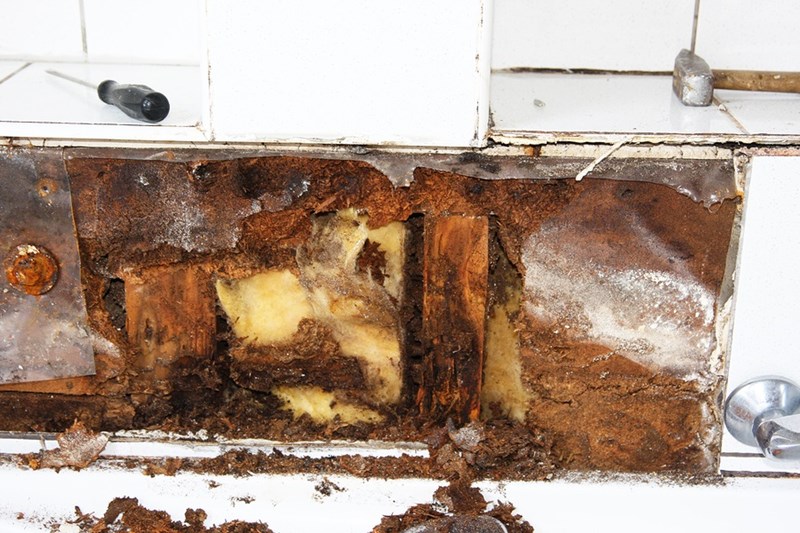Common Root Causes Of Water Damage in a Bathroom
Common Root Causes Of Water Damage in a Bathroom
Blog Article
Here down the page you can get additional wonderful expertise regarding How to Repair and Prevent Bathroom Water Damage.

The restroom is extremely vulnerable for wet buildup and also possible water damages because of the regular use of water in it. This article supplies straightforward examination strategies to assist discovering water damage risks.
The regular use of water in the restroom makes it incredibly vulnerable for wet buildup and also possible water damages. By checking it routinely, you can reduce water associated damages.
The following set of inspections is very easy to execute and also must be done when in every three months in order to keep your washroom in good shape and to avoid potential water damages brought on by the tub, the shower, pipe joints and plumbing, sinks, closets, and also the bathroom
Do not overlook performing these examinations and also be complete while doing them. Keep in mind that these straightforward assessments can conserve you a great deal of money by providing very early indicators for water damage
Bath tub as well as Shower
The shower and bath tub need special focus and upkeep. Inspect the tiles and also replace if cracked. See to it that there is no missing cement between the floor tiles. Check and change broken caulking at joints where the wall surfaces meet the flooring or the tub. Clogged drains pipes and pipelines problems will certainly avoid the bathtub from drying out and might indicate significant issues under the tub. Consult with an expert quickly to avoid architectural damage. Pay attention to discolorations or soft areas around the bath tub walls as they might suggest an inner leak.
Plumbing
Signs for water damages are hard to find since many pipelines are mounted inside the walls.
Pay unique attention to flooring and also walls wetness and spots as they might indicate an undetectable plumbing problem. Inspect dampness levels in adjacent spaces too.
Sinks as well as Cabinets
Sinks and also cabinets are revealed to moisture and also humidity everyday and are typically overlooked. Check regularly under the sink as well as on the kitchen counter above it. Fix any drip in the trap as it might suggest drainpipe troubles. Take a look around the sink, slow-moving draining pipes may suggest an obstructed drain. Replace sink seals if they are broken or loosened.
The Toilet
The bathroom is an at risk water junction. Inspect the water lines and also search for leaks around the bathroom seat, in the tube, and under the water storage tank. If you identify any indications of dampness on the floor around the toilet, look for leakages in the toilet rim and storage tank seals.
Realize that hanging toilet bowl antiperspirants raises the chances for clogs.
Water Damage Signs In The Bathroom To Avoid Cleanup
Musty smell
This is one of the easiest signs to catch because musty smells are so odorous. The damp, earthy, moldy smell should be a big red flag. The smell will develop when moisture gets trapped in surfaces, and begins to facilitate mold growth. Leaking pipes under cabinets, inside walls, and behind shower fixtures will cause moisture to stay trapped and not dry, which will lead to mold growth and spread. As soon as you notice any musty smells in your bathroom, have it checked for hidden water damage and cleanup signs.
Visible mold
If the smell isn’t there to give it away, sometimes you will actually see mold growth. Finding mold in your bathroom is a serious problem, because mold is very harmful to your health. By the time mold growth is visible, it also means that water damage has already occurred and been present for some time. The only way the mold problem can be resolved is to find the source of the moisture and get it stopped. To safely and adequately remove mold, you need to have professionals handle the remediation. Do not waste any time in getting mold problems addressed, fixed, and sanitized so that you can protect you and your family from the many respiratory symptoms caused by mold exposure.
Damaged floors
Bathroom floors should be able to withstand some exposure to water while still remaining in good condition. However, when excess exposure or water leaks occur, they will begin to damage even the most water-resistant flooring. If you notice any cracking, bubbling, staining, or warping on your bathroom floors, there is probably a water leak somewhere causing the distortion. If you notice areas of the floor have become softer, or even have a spongy feeling, there is probably damage to the subfloor. Subflooring is typically made up of plywood. When plywood is exposed to water or moisture, it will absorb it. Once it has become saturated, the weight of the excess water will cause the wood to swell and soften. Check the floors in your bathroom frequently to catch any of these sings before they lead to damaged subflooring.
Changes on walls
When water leaks behind walls, it will cause changes in the drywall. Peeling plaster, blistering paint, and soggy wallpaper are all good indicators that excess water is building up behind the wall. Water leaking behind drywall will cause it to swell and be soft to the tough. If you start to notice gaps along the trim of your walls, or where tile meets the wall, it could also be a strong indicator that there is a leak behind the wall. Any changes, distortion, or damage on the walls should be evaluated as soon as you notice it to prevent further water damage and cleanup.

I have been very excited about How to Prevent Bathroom Water Damage and I hope you enjoyed our article. Enjoyed reading our piece? Please share it. Let someone else check it out. Thanks a lot for taking the time to read it.
Get A Quote Report this page